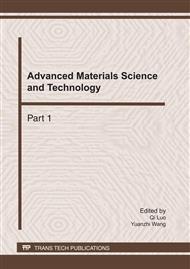p.281
p.287
p.293
p.299
p.305
p.310
p.316
p.320
p.325
Theoretical and Simulative Study on Hydraulic Bridge of Water Hydraulic Servo Valve
Abstract:
An analysis has been conducted on the hydraulic bridge of the water hydraulic servo valve with annular clearance between sleeve and spool land as its first hydraulic resistance. Through some formula deductions, the simplified hydraulic bridge is drawn and the relationship between flapper displacement and differential pressure of spool ends, which is demonstrated by the subsequent simulation works, is extracted. By the CFD(computational fluid dynamics) simulation, firstly, the pressure distributions of the flapper face and the fore end face of the nozzle are obtained. Results show that the flapper has an annular area where the existing pressure is negative. Secondly, the relationship between flapper displacement and flow force acting on flapper is also acquired, which is much beneficial to the steady-state and dynamic analysis of the water hydraulic servo valve.
Info:
Periodical:
Pages:
305-309
Citation:
Online since:
January 2011
Authors:
Price:
Сopyright:
© 2011 Trans Tech Publications Ltd. All Rights Reserved
Share:
Citation:


